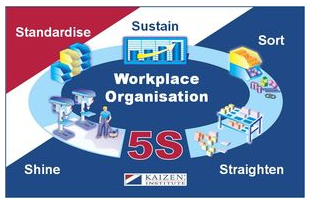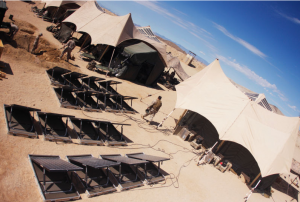Connecting Industries to a Green, Sustainable Future
For the past two decades the trade-off between sustainability and economic prosperity has been used as the leverage to pass regulations that flagrantly overlook the health of the environment.
Most governing bodies seem to accept the fact that growth comes with collateral damage and that damage is to be largely borne by the planet we inhabit.
But thankfully the lackadaisical attitude in some quarters is balanced by a
genuine desire to reduce-reuse-recycle, while building a bigger and better tomorrow. And the global celebration of the Earth Day bears testament to this drive!
Do You Celebrate the Earth Day?
If you go by dates April 22nd of every year is commemorated as The Earth Day.
In 1970 millions of US citizens woke up to the realization that their well being as a nation is dependent on the well-being of the environment. They took to the streets, marching to protest inconsiderate policies, marching to protest blatant industrial pollution and marching to protect the planet.
The legacy is now honoured by billions all over the world who dispense education, hold workshops and boot camps and in general celebrate going green in a bid to undo some of the damage done post the Industrial Revolution.
As manufacturers who contribute significantly to the GDP of the country, businesses need to take on the essence of Earth Day – not just on the 22nd– but throughout the year. And increasingly there is the impetus to do so because sectors they service are honouring “green”.
Military, Avionics, Nuclear Going Green
We have already talked about the steps military forces are taking to minimize the adverse impact on the environment. They are exploring renewable fuel options because the switch will not only help them cut down the waste their operations produce, it will also keep troops mobile and out of harm’s way for longer periods of time.
The aviation industry has been dedicated to the cause of conservation for the past fifty years. Businesses in the space have reduced fuel-burn/passenger-Km by 70%. Sustainable bio-fuel production that will bring down carbon dioxide emissions by 24% is a popular cause that’s seen much progress.
Even the nuclear power sector isn’t lagging behind. As the debate rages around whether nuclear is a clean source of energy, Gen IV reactors are maximizing production efficiency and utilizing the heat by-product in United Nations approved ways to transform the world.
Connectronics has been a leading producer of specialized connectors & robust interconnection systems that not only match user specs but can also bear high current, high voltages and the vagaries of nature.
We are proud to team up with green ventures like Yellow Springs Instruments and gratified to support key industries on their journey to go green.
If this resonates and you want to stay updated of the latest news in manufacturing, please follow us on Twitter and LinkedIn. Our blog is a handy resource too.
Keep Your Air Clean: Connectors Increase Miner Safety
Keeping tabs on miner safety, we’re revisiting the progression on industrial air filters. If you missed our last post highlighting this critical issue, our company is working on valuable solutions to enable clean air in mines, reducing worker exposure to dangerous particles.
Testing is Underway
Our engineers are currently in the process of conducting large-scale tests of the air filter. One aim is to measure the benefits of the new system. The other is to ensure that we are designing the best filter possible for optimal, effective, and lasting end results. The Connectronics connectors have been in place since the beginning of September. They are the source that cleans the air through static electricity within the mine.
How the Filters Work
Underground operations, i.e.) coal mines, generate an enormous amount of dust. Specialized air filters can capture and remove tiny particles to purify the air. Using the filter is straightforward; first, close access to the mine, and then turn on the filter. The filtering system works to carry away dust and dirt particles from the mine. The process results in cleaner air within the workspace and surrounding areas; for example, the cloud over that mining area should dissipate after the filter’s efforts are complete.
Illness Prevention
The air filter prevents dust that would otherwise be in the air from entering the miners’ lungs. Long term, this innovation could stop respiration of contaminated air from developing into potential lung disease.
Before this type of equipment, coal miners typically contracted pneumoconiosis, or miner’s lung/black lung disease. Inhaled dust is trapped within the lung, scarring the tissue, which then culminates into thick scar tissue. This results in coughing, breathing disorders, an influx of phlegm, and even premature death, in severe cases.
As industrial air filters achieve their goals, underground illnesses will no longer be an issue.
Industrial Connectors
At Connectronics, we design, manufacture, install, and service specialized interconnect systems and connectors for a range of industries. Along with providing these components for mining applications, we also work with other industries, including aerospace, defense, medical, oil exploration, and nuclear.
To help you stay up to date on cable assemblies, related industry trends, and updates like the one you’ve just read, follow our blog, reach out on Twitter, or use LinkedIn to connect with our friendly team.
Contact us today to discuss how our high voltage and high current parts can benefit your business too!
Workplace Organization Through Japan’s 5S System
Here at Connectronics, our main focus is customer service. In order to serve our customers at the highest level, we work to continually improve upon everyday methods. When it comes to organizational tools, a Japanese system called 5S has been shown to increase productivity, while keeping things organized, clean, and constantly improving. We are happy to implement some of these proven successful principals into our company processes and procedures. Here’s the breakdown…
Each “S” stands for the following:
1. Seiri – Sorting, Clearing, and Classifying
2. Seiton – Straightening, Simplifying, Setting in Order, and Configuring
3. Seiso – Sweeping, Shining, Scrubbing, Cleaning and Checking
4. Seiketsu – Standardizing, Stabilizing, Conforming
5. Shitsuke – Sustaining, Self-Discipline, Customizing, and Practicing
These five steps help to organize the workplace and working practices, creating a more efficient way of functioning. In English, the 5S can be roughly translated as Clearing, Configuring, Cleaning & Checking, Conformity & Finality, and Customizing & Practicing. According to the Kaizen Institute, the five steps follow this structure:
• Sorting – Distinguishing the difference between what is needed and what isn’t needed in the area
• Straightening – Arranging essential items so they are readily available and easy to use, in addition to identifying where items belong and making sure they get back to where they belong when a task is finished
• Shining – Cleaning the equipment and workplace to ensure it stays in order and is easy to see anything that may be defective
• Standardizing – Repeatedly reviewing the first three standards
• Sustaining – Abiding by the rules to ensure standards and met and improvements are continually happening
Here at Connectronics, we look forward to implementing a fine combination of these practices. We are proud to better serve our customers in all industries we work with, such as avionics, aerospace, analytical instruments, defense, industrial, medical, nuclear, radar, oil exploration, and stage lighting.
For all the latest happening here at Connectronics, don’t forget to follow our blog, follow us on Twitter, or connect with us on LinkedIn, or click here to contact us directly.
Military & Medical Fields – Green Updates Surround Earth Day 2017
With Earth Day coming up in April, a lot of focus is put on green initiatives, and how various fields of manufacturing are planning to further their push towards a more environmentally-sound and responsible existence. Few fields have pushed harder towards greening their processes and industry than medical and military.
Medical and military look to green their industries for differing reasons. In the military field, much of the drive comes from the desire to be mobile and to save lives. Refueling vehicles that are extremely dependent on oil leaves troops vulnerable to enemy attack, so converting fuel operations to renewables can reduce the amount of time troops spend in harm’s way. Additionally, utilizing solar panels allows for fast set-up of bases of operations, as well easy mobility of bases, allowing better movement and providing for different tactics.
As Reuters notes, this isn’t exactly new – between 2011 and 2015, military renewable energy projects nearly tripled. The reasoning behind it is that U.S. bases are being set up to operate independent of the public grid, using solar power and on-site generation. In the case of a natural disaster or attack, this could leave the important bases operating even if the public grid is down, allowing for response and recovery.
In comparison, the medical field is stationary, so it doesn’t need to go green to improve mobility. While there are a number of green initiatives coming, with suggestions such as greener waste disposal methods and water conservation high on the list, none is greater than the push to consume less energy or more responsibly-sourced energy. With energy making up an approximate 1%-3% of a typical hospital’s operating budget, cutting that back can make a huge dent.
Numerous hospitals have already tried reduction and succeeded – when Greenwich Hospital in Connecticut reprogrammed its heating and cooling plants, updated its light bulbs, and reengineered the air handling system, it saw a reduction in energy use by 35%, saving over $300,000 per year. The energy savings allowed the hospital to recoup its capital investment in the projects within six months – a shining example of how going green is not only great for the environment but can be great for the bottom line of a company. Many other hospitals and systems have, or are in the process of making a move to greener energy – University of Maryland Medical Center, Stony Brook University Hospital, and the Philadelphia College of Osteopathic Medicine are just some of the major cases.
At Connectronics, we focus on producing connectors and interconnect equipment for use with a wide variety of systems, including the latest in renewable and alternative energy sources. Keep up with all we are doing in the connector field by connecting with us yourself, through LinkedIn, Twitter, and here at our blog. Our regular updates include insight into our future plans, industry information, and much more.
For further questions on your projects and our products contact us today.





